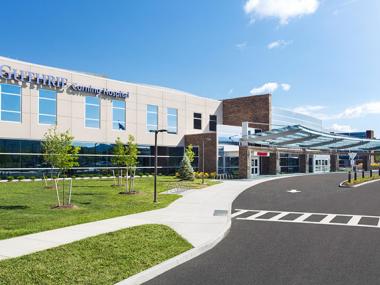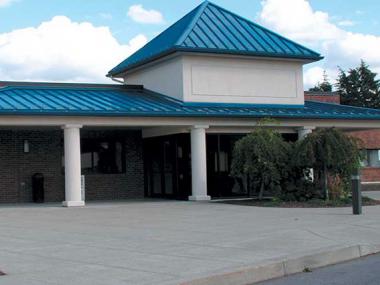Mammography is the Best Screening Method for Detecting Breast Cancer
Catching breast cancer in early stages through regular annual screening gives women the best chance of beating breast cancer.
To schedule an appointment call 866-GUTHRIE (866-488-4743)
Jen's Breast Cancer Journey
Locations:
New York:
- Guthrie Big Flats - 31 Arnot Road, Horseheads, N.Y.
- Guthrie Corning Hospital - One Guthrie Drive, Corning, N.Y.
- Guthrie Cortland Medical Center - 134 Homer Avenue, Cortland, N.Y.
- Guthrie Ithaca City Harbor - 720 Willow Avenue, Ithaca, N.Y.
- Guthrie Ithaca Hanshaw - 1780 Hanshaw Road, Ithaca, N.Y
- Guthrie Lourdes Breast Care Center - 169 Riverside Drive, Binghamton, N.Y.
- 607-798-6161
- Guthrie Owego - 1246 State Route 38, Owego, N.Y.
- Guthrie Southport - 1336 Cedar Street, Elmira, N.Y.
- Guthrie Vestal Shippers Road - 3101 Shippers Rd., Vestal, N.Y.
- 607-584-4549
Pennsylvania:
- Guthrie Robert Packer Hospital, 1 Guthrie Square, Sayre, Pa.
- Guthrie Robert Packer Hospital, Towanda Campus, 91 Hospital Drive, Towanda, Pa.
- Guthrie Troy Community Hospital. 275 Guthrie Drive, Troy, Pa.
- Guthrie Wellsboro - 110 Plaza Lane, Wellsboro, Pa.
What is a Mammogram?
A mammogram uses x-ray to look at the inner structure of the breast. Radiologists looking at mammography images can detect cancer when it is too small to be felt.
The breast is compressed under a paddle as images are acquired. We use 2D mammography, which takes images in two views, and 3D mammography, which takes multiple images from many angles.
3D Mammography, or breast tomosynthesis, is the best imaging technology for screening women with dense breasts or who are at high risk for developing breast cancer. It allows the doctor to view many thin segments of breast tissue much like the pages of a book. This results in a clearer and more comprehensive view of breast tissue.
Who Should Get a Mammogram and When?
Average Risk: Beginning at age 40, every woman should get a screening mammogram annually.
High Risk: Women at higher risk should talk to their doctor about the appropriate age to start screenings and how often is appropriate. Groups who are at higher risk for developing breast cancer can include:
- Genetic mutation known to greatly increase breast cancer risk including BRCA 1 or 2
- Family history of breast cancer, even without a genetic abnormality
- History of chest radiation under age 30
- Prior breast biopsy showing abnormal cells
- Women of Ashkenazi Jewish decent
Learn more about High Risk for Breast Cancer.
Women Under Age 40
It all starts with a conversation. If you’re younger than the recommended age for mammography (40 years old for average risk women) and have a history of breast cancer in your family (mother, sister or aunt with breast cancer) talk to your provider or contact the High Risk Breast Cancer Clinic at 570-887-2850. Starting mammograms at an earlier age may be appropriate for you.
Women with a strong family history of breast cancer may need to start mammography screening earlier, perhaps as young as 30, and additional screening with MRI may be recommended in addition to annual mammography.
What If I Feel Something Abnormal?
Guthrie encourages anyone with questions or concerns about their breast health to contact their primary care provider and/or request a diagnostic evaluation at one of Guthrie's Breast Imaging Centers by calling 866-GUTHRIE (866-488-4743). Symptoms of breast cancer can include:
- Lumps
- Nipple discharge
- Skin changes
Mammography at Guthrie
- We have a team of specially trained breast radiologists who read high volumes of breast images every day.
- We offer 3D mammography and breast MRI for women with dense breasts or who are at high risk for developing breast cancer.
- Designated Breast Imaging Centers of Excellence by the American College of Radiology (ACR).
- Guthrie Robert Packer Hospital in Sayre, Pa.
- Guthrie Corning Hospital in Corning, N.Y.
- Recognized by National Accreditation Program for Breast Centers (NAPBC)
- Guthrie Lourdes Hospital in Binghamton, N.Y.
All Guthrie Mammography locations are accredited by the American College of Radiology.




